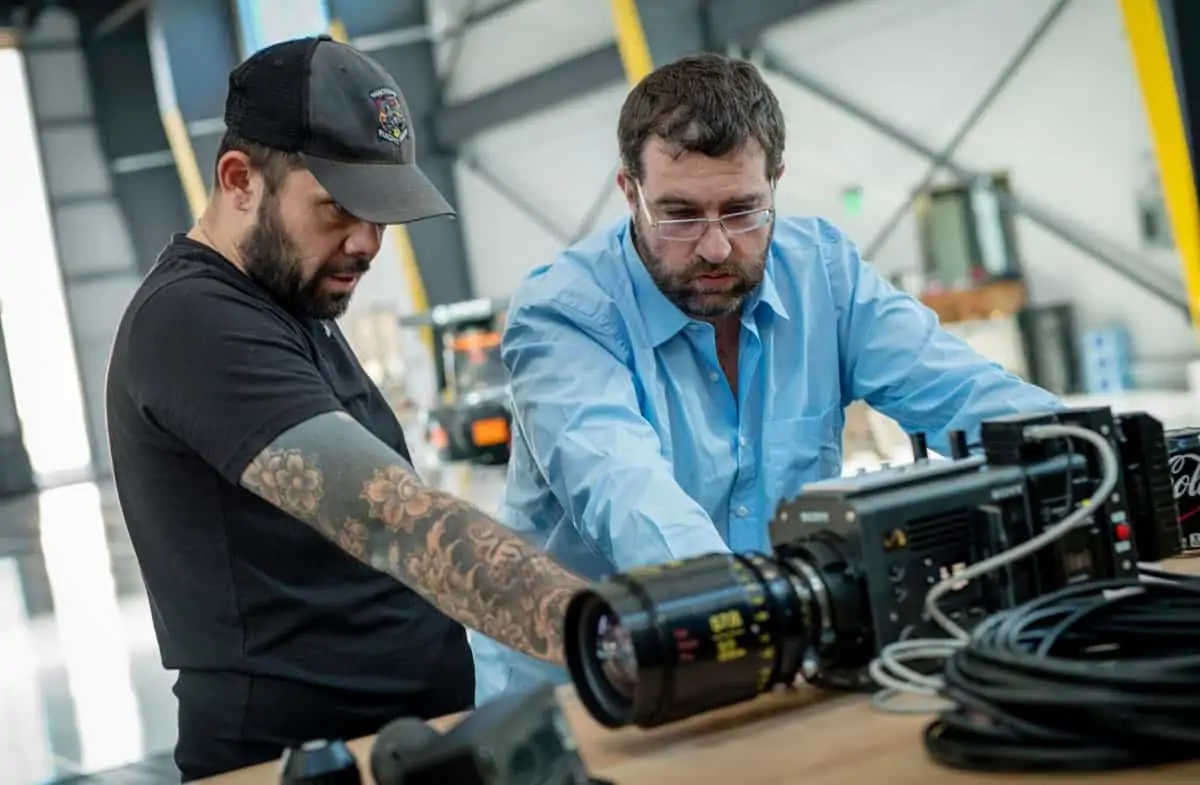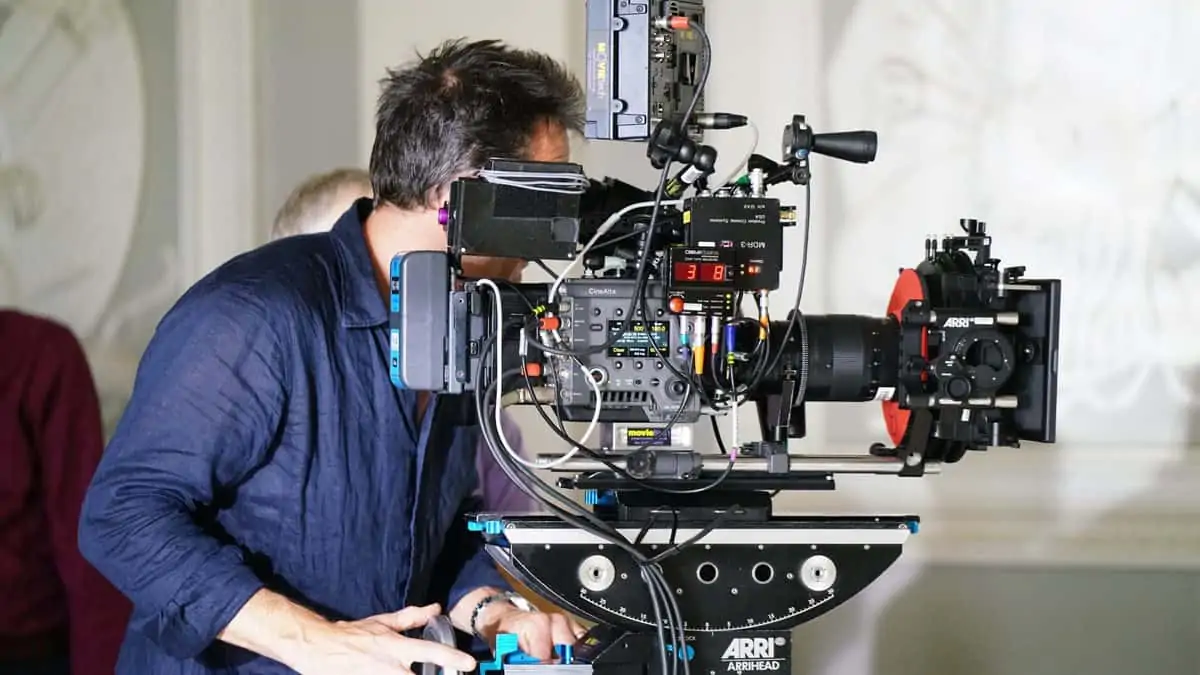Cooke S7/i Full Frame Plus Lens First Choice to Showcase Sony VENICE CineAlta Camera
Jul 20, 2018

With only a four-day advance notice, and under strict non-disclosure, cinematographer Gianluca Bertone of Bertone Visuals in El Segundo, CA had to plan out the nighttime aerial production that would eventually show off Sony’s new VENICE CineAlta camera system — as well as the new Crystal LED Display System — at Sony’s NAB press event four months later. Flying three-night missions for Sony, Bertone was tasked with acquiring the absolute best footage in 6K, so that Sony could show the best images possible from its newest 15 f-stops capable digital cinema camera and on its newest 10-bit HDR 440-inch wide display (8K x 4K).
“This would be the first time that the camera’s ISO 2500 exposure index would be used, and the images had to be perfect for Sony at NAB,” said Bertone. “Back in December, the VENICE was not yet on the market, but two Sony engineers arrived at LAX with the camera, and immediately brought the camera to Pursuit Aviation’s hanger at the Van Nuys airport. Over the next day and a half, pilot John Tamburro and ShotOver tech camera co-operator Andrea Bassani and mounted the camera on Pursuit Aviation’s helicopter.”
Bertone had two missions to accomplish for Sony with his three nighttime flights: test the VENICE’s main features, which had already been publicly announced, and test the newest non-public features — that meant shooting in Sony Raw X-OCN (for the best colour depth) at 6K full frame using 2500 ISO base.
“You now have a digital cinema camera that can shoot at ISO 2500 — which is great for night exteriors, dark interiors, working with slower lenses or where content needs to be graded in high dynamic range, while maintaining the maximum shadow detail,” explained Bertone. “And that means your lens has to perform perfectly.”

While aerial footage is typically shot with zoom lenses, one prime lens — each from a different lens manufacturer — was chosen for each mission, as lenses can’t be changed while airborne. “I was able to pick the lenses, and Cooke was at the top of my list,” added Bertone. “I own a number of Cooke Anamorphic/i Primes — renting more lenses when needed — as well as a set of S4/i Primes, so I know the great quality and great ‘Cooke Look’ that I was able to deliver. My choice for Sony was a Cooke 32mm S7/i Prime. And I fully understood why Sony wanted to shoot with a variety of lenses — it makes perfect sense when shooting demo footage of a camera.”
“I had originally pitched this idea to Sony on September 6, 2017, when the VENICE was introduced at Sony Studios in Culver City, CA,” explained Bertone. “I have a very good relationship with Sony and have worked with them on a lot of projects, including the F65. They trusted me to show what the camera could do, and I knew that I could trust the Cooke S7/i.”
“We were more than pleased that Bertone had chosen the S7/i as one of the lenses to showcase the great footage of Sony’s VENICE camera and their Crystal LED Display System,” said Les Zellan, CEO, Cooke Optics. “As Bertone mentioned, the ‘Cooke Look’ that cinematographers have loved, and the consistency that we’ve been delivering for more than 100 years, is what makes Cooke lenses the choice for a great number of the world’s best cinematographers. Today, all Cooke lenses are designed from the ground up for the motion picture and television industries — we don’t cut corners by using still lens components or concepts. It’s our lens design and craftsmanship that sets Cooke lenses apart from the rest.”

As the footage would show off the VENICE CineAlta camera as well as the Crystal LED Display System, there were a number of post-production challenges to deal with at Bertone Visual’s colour grading facility in El Segundo, CA. “We had to deliver our 6K full frame source for an 8K HDR final canvas, but we didn’t have the actual display that would be used. That was in Japan,” explained Bertone. “For over a month, using DaVinci Resolve and a Sony 1000 nits 4K BVM X300 HDR monitor, we processed three-minute timelines that were sent to Japan so that Sony could look at them on the Crystal, as we couldn’t grade for the system — no one could. Then based on feedback, we would make any needed corrections.
“At this year’s NAB, everyone in the broadcast and cinema communities noticed the cutting-edge technology of the bright wall, and we definitely had a taste of the future, not just the resolution, which is one of many parameters of quality, but also for the visual perceptive impact of colours, brightness and details that were just not there a few years ago. Thus, being part of this frontier production was personally very fulfilling.”
You can view the incredible footage below:



















